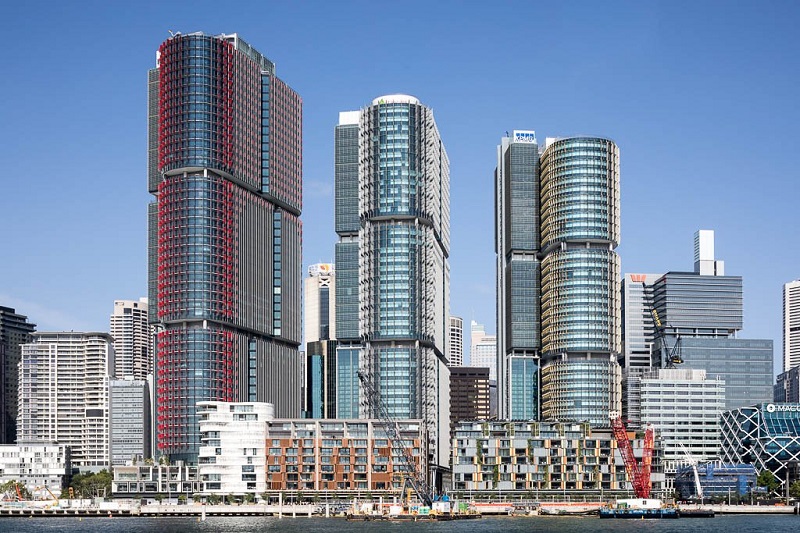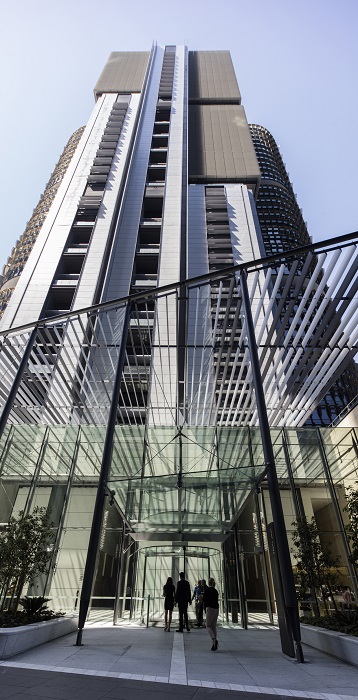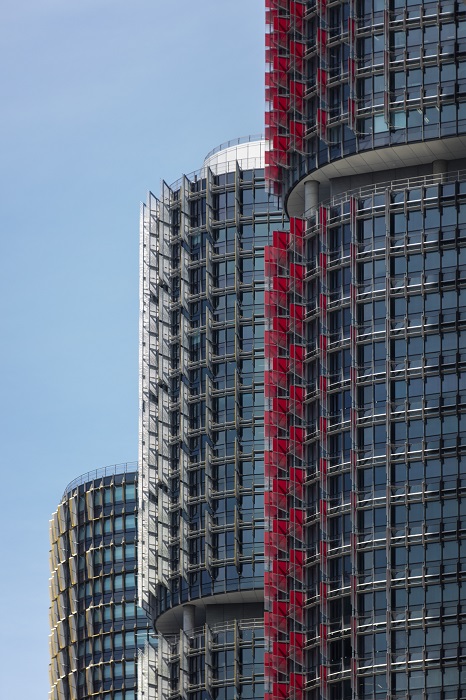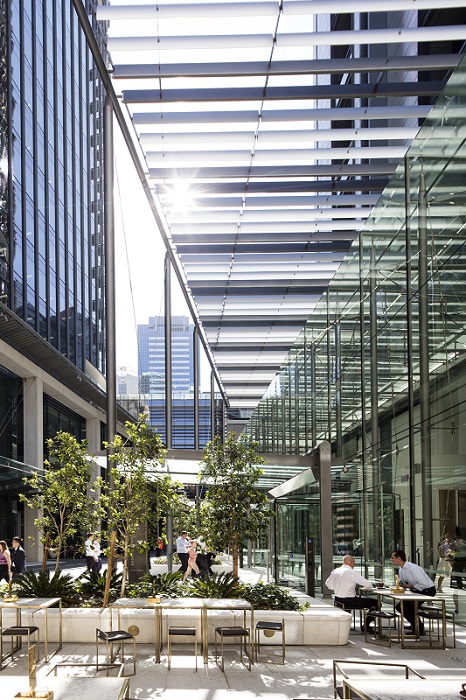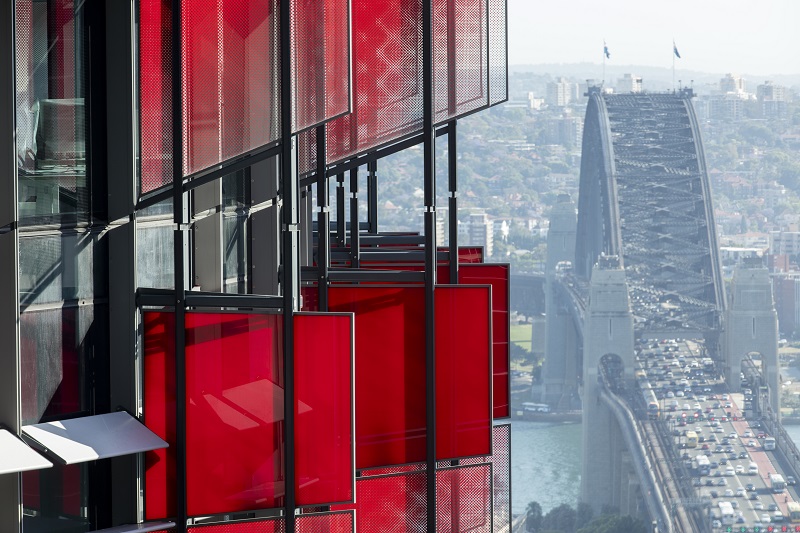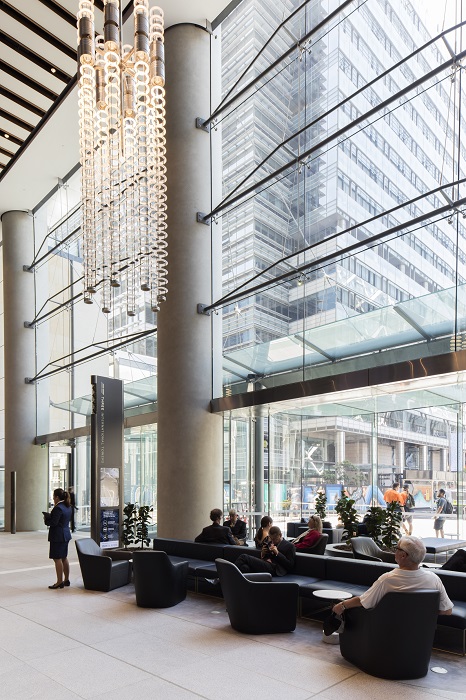International Towers Sydney
On 8th December 2016, the International Towers Sydney were completed. Designed by Rogers Stirk Harbour + Partners (RSHP), the milestone marks the conclusion of the first significant part of their masterplan for Barangaroo South, a major urban renewal project.
Developed by Lend Lease, the project is Sydney’s largest piece of urban renewal since the 2000 Olympics. The central business district (CBD) is united with the waterfront, a new financial services hub and a new carbon-neutral district in the downtown area.
Opening out over the Sydney’s western harbour, the towers are positioned on a radial geometry to maximise views and exposure to sunlight. Originally conceived in 2008, the three towers are designed to be harmonious, but with different detailing giving them individual identities.
The towers offer approximately 300,000 sq. m of premium office space for around 23,000 workers. The 2,500 sq. m floorplates are flexible, allowing workers to personalise and arrange their space according to their needs.
RSHP suggest that the design of the towers has ‘turned convention on its head’ and created ‘a workplace for the future’.
Throughout the buildings, the design incorporates large vertical spaces with high ceilings, day-lit lift lobbies and fresh air. The transparent lobbies are designed to merge into Barangaroo South’s tight network of streets and lanes, helping to give the towers a sense of human scale and impact at ground level.
The towers have received the prestigious 6-star Green Star rating, thanks to a range of environmental features including facades that combine horizontal and vertical filigree solar shading, harbour water heat rejection, rainwater capture and recycling, solar panels, blackwater treatment, and a basement that prioritises bicycles over cars.
Speaking at the launch of the towers, RSHP’s senior partner Richard Rogers said:
“Sydney is one of the most magnificent port cities in the world, but historically the city has never reached the waterfront. One of the main aims of this project was to extend the CBD down to the waterfront, creating a new district of work and leisure, with 50% open space.
“Since the towers have been built, the area has been teeming with people, life and vitality, showing that this was absolutely the right response to the area. Working on a project of this scale has been an incredible opportunity for the practice to undertake a high quality piece of placemaking.”
Project Director Avtar Lotay said:
“The radial arrangement of the towers break the orthodox Cartesian grid, the radial arrangement exploits views of the city and water, maximising solar access. The resulting street pattern and its proportions provide a human scale public domain enriched by an intelligent mix of activity, which is strongly connected to the CBD.”
Project Architect Paul Thompson said:
“The requirement for each of the towers to have an individual, low energy façade which could be read as a cohesive whole gave us the opportunity to develop and formulate three external façade systems which responded to their unique location. The façades used detailed, filigree solar shading to create a cohesive whole across the precinct and provide legibility from city to human scale.
“The opportunity to benchmark, model, prototype, test, and deliver these innovative facades with a global collection of specialist consultants, façade engineers, fabricators, and manufacturers has been an extraordinary and highly rewarding experience.”
In 2018, the towers were shortlisted for both the “Best Urban Habitat” and “Best Tall Building (Asia & Australasia)” award at the Council for Tall Buildings and the Urban Habitat conference. https://www.rsh-p.com/news/rshps-international-towers-sydney-shortlisted-for-ctbuh-awards/
Images and content courtesy of RSHP.
--RSHP
[edit] Related articles on Designing Buildings Wiki
Featured articles and news
RTPI leader to become new CIOB Chief Executive Officer
Dr Victoria Hills MRTPI, FICE to take over after Caroline Gumble’s departure.
Social and affordable housing, a long term plan for delivery
The “Delivering a Decade of Renewal for Social and Affordable Housing” strategy sets out future path.
A change to adoptive architecture
Effects of global weather warming on architectural detailing, material choice and human interaction.
The proposed publicly owned and backed subsidiary of Homes England, to facilitate new homes.
How big is the problem and what can we do to mitigate the effects?
Overheating guidance and tools for building designers
A number of cool guides to help with the heat.
The UK's Modern Industrial Strategy: A 10 year plan
Previous consultation criticism, current key elements and general support with some persisting reservations.
Building Safety Regulator reforms
New roles, new staff and a new fast track service pave the way for a single construction regulator.
Architectural Technologist CPDs and Communications
CIAT CPD… and how you can do it!
Cooling centres and cool spaces
Managing extreme heat in cities by directing the public to places for heat stress relief and water sources.
Winter gardens: A brief history and warm variations
Extending the season with glass in different forms and terms.
Restoring Great Yarmouth's Winter Gardens
Transforming one of the least sustainable constructions imaginable.
Construction Skills Mission Board launch sector drive
Newly formed government and industry collaboration set strategy for recruiting an additional 100,000 construction workers a year.
New Architects Code comes into effect in September 2025
ARB Architects Code of Conduct and Practice available with ongoing consultation regarding guidance.
Welsh Skills Body (Medr) launches ambitious plan
The new skills body brings together funding and regulation of tertiary education and research for the devolved nation.
Paul Gandy FCIOB announced as next CIOB President
Former Tilbury Douglas CEO takes helm.
UK Infrastructure: A 10 Year Strategy. In brief with reactions
With the National Infrastructure and Service Transformation Authority (NISTA).







